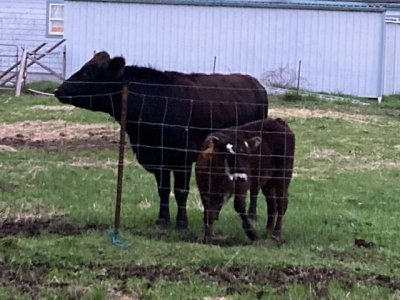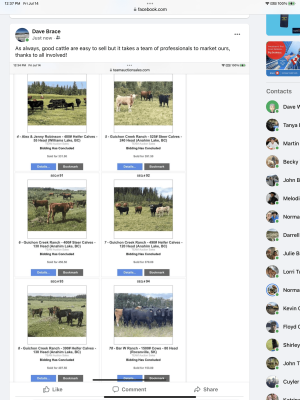It shouldn't be wrong if it's your actual numbers from your experience?With too simple math.
Last fall you could have sold that heifer for let's say $1800.
Using that as a base price and using hay at 14c a pound.
Likely on the low side, but she is going to consume roughly $3 a day in hay for 150-180 days.
Then grassing her in the summer. 1.50 a day for 180 days.
And then another winter where she eats 4.50 a day for 180 days.
Add that rough math all together and you have an animal that has cost you 3400 (not even including the real costs) and hasn't even brought a calf into the world yet.
Pick apart my math, I'm sure it's wrong
Those are not even close to my numbers. You might want to look at my location before you say what every one can or can't do. We can go all winter with out feeding hay. 0.3 or 0.5 bales /h/d is not uncommon to take a cow through winter. 1 b/h/d is a bad year.
You can use what ever base price you want for the heifer value at weaning, it's all relative.
From the time she is bred until her first calf, those expenses get billed against, agaisnt that first calf, just like any other cow in production. Our heifers go out with the herd bulls in the pastures and they are expected to calf with the herd like any other cows. There are no special accommodations for heifers like heifer bulls, heifer pastures, etc. She is probable 14-16mo at breeding.
The time from that heifers conception to her weaning all goes agaisnt her base price. No matter if she is sold or retained, that time is the same. Let's call that roughly 7-8mo.
The development of a heifer is from weaning until being bred, roughly 6-8 months. I can raise a heifer in that time period for roughly $500/hd (US). That's real numbers I did last year and that I am currently doing it this year.
In the real world the is no time lapse or skip with retained heifers.
Not breeding, calving trouble, etc are almost non-existent with the type of cattle we run our retaining/ culling program. It's like 1-2%.
I've seen retaining done wrong with cheap bulls and no data and not culling hard. That's not me. Ive also bought enough cows and see enough cows bought to know its not a rosey as some would make it. There is a place for both and if you aren't using every thing at your disposal in this business it's going to be tough.



